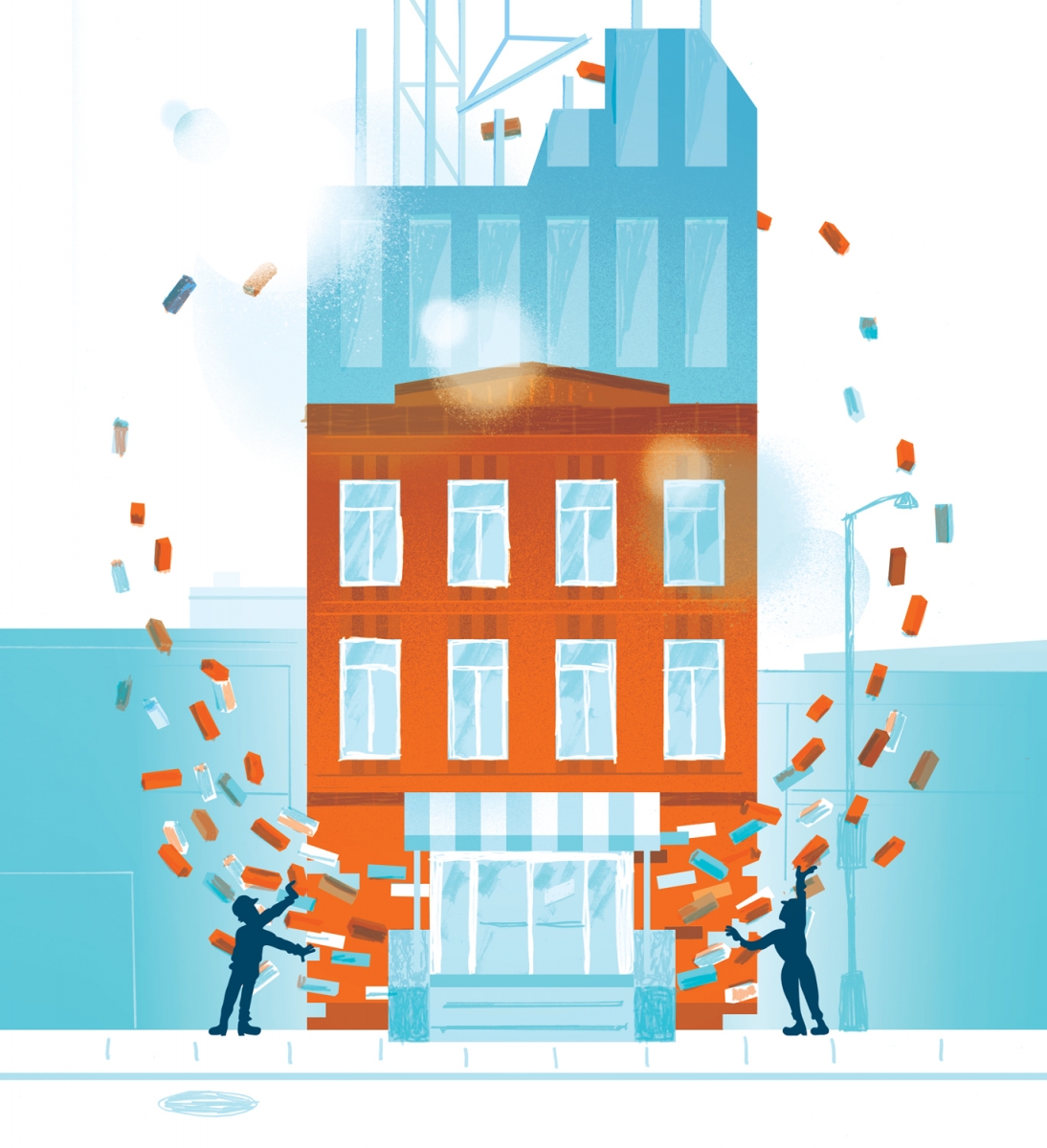Chris Ambrozic could be among Edmonton’s best at dealing with priceless materials. But you won’t find him moving gingerly through the controlled climates of local archives or museums. Instead, look for him in the open-air bustle of a construction site, making his name as a go-to expert in preserving century-old facades by dismantling and reassembling them, brick by irreplaceable brick.
As Edmonton wrestles with a reputation for letting progress erase its past, the services of Scorpio Masonry, with Ambrozic as its president, have recently been contracted on two major restorations. In the heart of downtown, the Kelly Ramsey block rises 25 storeys from the ashes of a March 2009 fire. Linking it to its early 20th century origins are the same bricks and stones used to recreate the first four floors. Similarly, at 124th Street and 102nd Avenue, The MacLaren (a.k.a. the Glenora Bed and Breakfast Inn; ne the Buena Vista Apartments) will be equally high, and sit atop the same bricks assembled there in 1914 or 1915.
This approach to restoration is uncommon for three main reasons. One: There are only so many historic buildings available as podiums for new skyscrapers. Two: It isn’t necessary when working with undesignated historical structures, which account for the vast majority of Edmonton’s antique buildings, including these projects. And three: Building this way eats into the bottom line, because it’s time-consuming, persnickety work. How persnickety? I asked Ambrozic late last summer as his company was tapping the last bricks into place at the Kelly Ramsey and planning the takedown for The MacLaren.
Ambrozic uses time to sum up the complexity of such jobs. “You take it down and, two years later, you put it back up.”
On the Kelly Ramsey, Ambrozic, a mason of more than 25 years, advocated for disassembly rather than shoring up the walls, while a five-storey parkade was excavated and built beneath the side-by-side structures. It would be safer, and it would better protect those precious facades. For his trouble, he earned the right to haul the material to his yard in Winterburn; 100,000 brown bricks on the Kelly building alone, each about six centimetres high and 20 long. When other parts of demolition were complete and the rebuild could begin, his team brought them back by hand, foregoing forklifts “because we don’t want to dump a pallet and break a bunch of stuff that we can’t get.”In some ways, though, working with the old bricks was a snap. After you clean off the original, crumbling mortar, they’re ready to place – almost anywhere, but still according to specs in the drawings Ambrozic made before takedown.
